The Stigmaria Fossil: A Unique Addition to Your Collection
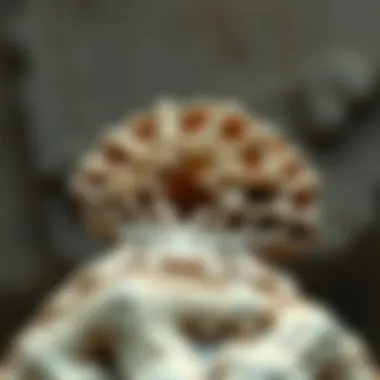
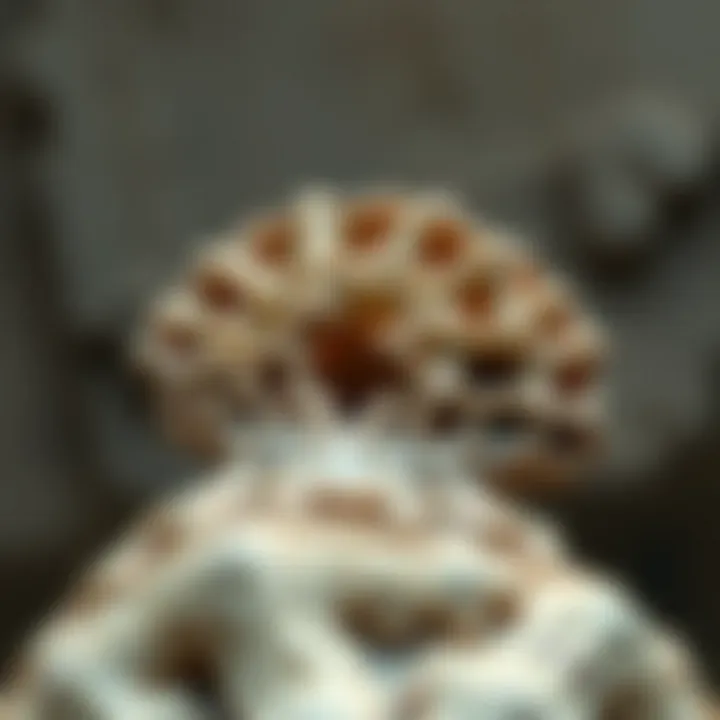
Intro
Stigmaria fossils, often overshadowed by more prominent prehistoric remains, provide a unique glimpse into the past. Unlike the usual dino bones or exquisitely preserved insects, Stigmaria represents the underappreciated roots of ancient plants, specifically those associated with the lycopod trees during the Carboniferous period. These remnants, much like vintage vinyl records, hold stories waiting to be told—if only we know how to interpret them. In this guide, we will break down everything a collector needs to appreciate, identify and value Stigmaria fossils.
History and Origins
Overview of Collectibles, Rocks, and Fossils
Collectibles of all types have a grip on human fascination that spans generations. Fossils, specifically, attract individuals due to their tangible connections to a time long before humanity roamed the Earth. Stigmaria fossils, typically found where coal deposits lie, arise from ancient swamp-like environments, making them a prized piece of geological history. As such, they find themselves in the collections of both casual enthusiasts and serious scholars alike.
Historical Significance and Cultural Impact
Stigmaria fossils do not merely exist as objects; they played a role in revealing the very fabric of prehistoric ecosystems. As paleontology blossomed in the 19th century, scholars unearthed these fossils in places like the coal mines of England and North America. Significant names, like Sir Richard Owen, helped stitch together narratives that framed our understanding of plant life during the Carboniferous.
The impact of these findings stretched beyond academic circles, influencing artists and the nascent environmental movement, as the public began to appreciate the wetlands and forests of the past.
Identification and Classification
Guide to Identifying Rocks and Fossils
Identifying Stigmaria requires a bit of finesse. Unlike other fossils that have distinct shapes or recognizable features, Stigmaria can often appear as mere pebbles. Here’s how to spot them:
- Texture: They usually have a rough texture due to their carbon-rich content.
- Shape: Look for cylindrical or branched structures. They often seem uneven, resembling the network of roots.
- Color: They might exhibit a dark brown or black appearance, akin to charcoal.
Common Types and Variations
While Stigmaria fossils share a fundamental structure, not all are created equal. Variations do exist, shaped by geological factors and the conditions in which they were preserved. Here are a few types to keep an eye on:
- Branching Stigmaria: These showcase multiple root-like extensions.
- Stigmaria with Bark: Some specimens may include remnants that resemble bark, offering clues about the plant from which they originated.
- Partially Preserved Samples: You might find pieces that show both root structure and traces of sedimentary rock—all telling a story of their former life.
Remember, each Stigmaria fossil can offer insight into the ancient ecosystem, but identifying them correctly is crucial for any serious collection.
Understanding the historical context and recognizing the distinguishing features of Stigmaria fossils will empower any collector. With these foundational aspects covered, let’s look into the specifics about market value, acquisition strategies, and effective display methods.
Prelims to Stigmaria Fossils
Understanding Stigmaria fossils is essential for anyone interested in paleontology or fossil collecting. These relics provide unique insights into prehistoric environments, particularly from the Carboniferous period, a time when lush forests thrived and early forms of plant life were establishing roots—in every sense of the word. The beauty of Stigmaria lies not just in their age but in the stories they tell about the earth's past. Collectors often find themselves drawn to these fossils because they encapsulate a time frame that resonates with significant biological evolution.
Stigmaria fossils are more than mere collectibles. They serve multiple purposes: as educational tools, as pieces of historical geology, and even as artful embellishments in collections. For a collector or a scholar, recognizing the importance of Stigmaria can lead to greater appreciation for the intricate ecosystems that existed millennia ago, giving context to the evolution of life itself. One must consider factors like rarity, condition, and authenticity when looking to add these fossils to a personal collection. This guide aims to shed light on all aspects of Stigmaria—what they are, their historical background, and the scientific and market significance they behold.
Defining Stigmaria
Stigmaria are structures associated primarily with the roots of the ancient tree-like plants known as Lepidodendron, which flourished during the Carboniferous period. Often described as root casts, these fossils represent the intricate underground network of plant life that once dominated swampy landscapes. While they are often mistaken for other types of fossils due to their somewhat ambiguous shapes, Stigmaria can be identified by their characteristic cylindrical forms and branching structures.
Collectors cherish Stigmaria for their distinctive look and the narratives they encapsulate, making them a prized addition to any fossil collection. The morphology of Stigmaria has fascinated not only collectors but also scientists who study the evolutionary development of plants. This interest makes understanding their defining features essential for both appreciation and study.
Historical Context and Discovery
The history of Stigmaria fossils dates back to the mid-19th century when paleontologists began to shed light on the complex relationships between plant life and the geology of the Carboniferous era. As the study of geological strata progressed, it became clear that these peculiar root structures were more than just random occurrences; they were remnants of specific plant types that played critical roles in shaping ancient ecosystems. Early fossil hunters and scientists, often using rudimentary tools, stumbled upon these organic remains while prospecting in coal mines and riverbanks.
The first formal identification of Stigmaria took place in the 1840s, thanks in part to the efforts of renowned geologist Adam Sedgwick, among others. Their ability to decipher what these roots represented paved the way for a greater understanding of paleobotany, allowing future generations to grasp how past environments functioned. As more fossils were uncovered, the narrative around Stigmaria expanded, revealing their significance in the evolution of terrestrial life and shedding light on climatic shifts long forgotten.
The story of Stigmaria is rich and layered, and as modern scientists continue to explore and study these fossils, the historical context grows deeper. In summation, Stigmaria fossils are not merely objects of curiosity; they are vital components in the broader narrative of our planet's biological history.
The Science Behind Stigmaria
Understanding Stigmaria fossils requires delving deeper into their science. These remarkable fossils not only tell a story of the past but also shed light on ancient ecosystems and plant life. Knowing how Stigmaria formed and their unique characteristics can profoundly enhance a collector's appreciation. For those in the trade, comprehending the paleontological significance of these fossils adds another layer to their value. This section not only enriches the knowledge of current collectors but also serves as a solid foundation for newcomers.
Formation and Characteristics
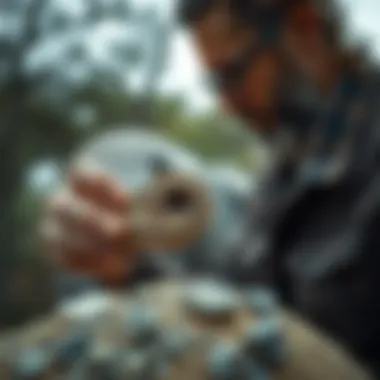

Stigmaria fossils originate from the submerged roots of ancient plants, particularly those belonging to the Lycopsida group. They represent a pivotal moment in plant evolution, marking a time when plants were transforming the Earth's landscapes. The roots of these structures were designed to extract water and nutrients from the soil, showcasing adaptability in harsh environments.
Formation occurs primarily during the Carboniferous period, around 359 to 299 million years ago. Stigmaria roots developed in swampy areas rich with humidity, often forming extensive networks that became entombed in sediment. This sediment, while initially lifeless, eventually solidified into rock through the ages.
Some characteristics to observe in Stigmaria include:
- Shape: Typically cylindrical with distinct branching patterns.
- Texture: The surface is often rough, showing signs of plant life, while occasionally smooth or shiny when well-preserved.
- Size: They can range from a few centimeters to several meters in length, depending on the specimen.
Owning a Stigmaria fossil is akin to possessing a piece of Earth's history, each unique in form yet telling the same tale of survival and adaptation. Being knowledgeable about these characteristics can help collectors identify genuine specimens in a market filled with imitations.
Paleontological Significance
Stigmaria fossils hold substantial value in understanding prehistoric ecosystems. They not only provide insights into the flora of the Carboniferous period but also hint at the climatic conditions at that time. Because these fossils preserve a snapshot of ancient plant life and growth patterns, they become crucial for paleobotanists studying the evolution of terrestrial life.
The significance is multi-faceted. For one, they indicate how plant life transitioned from aquatic to terrestrial habitats. This transition was vital for creating the oxygen-rich atmosphere we enjoy today. Moreover, Stigmaria's root systems played a crucial role in soil stabilization, which would have dramatically changed landscapes.
Moreover, researchers studying these fossils can glean information regarding ancient climate fluctuations. By examining the sediment and microfossils surrounding Stigmaria, paleontologists often compile data on temperature and humidity patterns, illustrating a changing world long before humans existed.
"The study of Stigmaria fossils not only educates us about individual species but also enriches our understanding of ecosystem dynamics across geologic time."
In summary, understanding the formation and paleontological value of Stigmaria fossils is beneficial for collectors, enhancing their acquisition experience while fostering a richer connection to the ancient world. Every fossil possesses a tale waiting to be uncovered, and these roots are no exception.
Identifying Genuine Stigmaria Fossils
When it comes to collecting fossils, Stigmaria represents a fascinating and often complex realm. Recognizing genuine specimens is crucial not only to preserve the integrity of your collection but also to ensure that you are investing your hard-earned money wisely. In this section, we will delve into the details and approaches to identify authentic Stigmaria fossils, offering you essential tools and insights you can utilize.
Visual Characteristics
When you lay eyes on a Stigmaria fossil, there are distinct features that can help guide your evaluation.
- Texture: Stigmaria fossils often exhibit a texture that resembles tree roots. If you observe branching patterns or a series of thin, segmented lines, you might be looking at genuine material. Authentic specimens tend to have a fibrous appearance, while counterfeit specimens can be smooth or paste-like.
- Color Variance: Look for natural coloration in earthy tones like brown, dark blue, or green. A true Stigmaria will typically show a patina or signs of weathering. If the color seems overly vibrant or unnatural, it may be a red flag.
- Weight: The heft of the fossil plays a role, too. A genuine Stigmaria is often dense due to the mineral content it has accumulated over centuries. If it feels unexpectedly light, take a second look.
- Structure: Examine the branching patterns closely. Authentic Stigmaria often show irregular growth structures indicative of their ancient biological nature. Watch out for overly uniform or symmetrical designs.
By focusing on these visual cues, you can develop a more discerning eye in identifying the genuine articles in a market filled with imitations.
Tools for Verification
In addition to relying on your observational skills, a selection of tools can aid in verifying the authenticity of Stigmaria fossils.
- Loupe or Magnifying Glass: This handy tool allows you to examine the fossil's details up close. A magnifying glass will help you pick up on subtle textures and patterns that might go unnoticed with the naked eye.
- Scale: Use a scale to weigh the fossil. As mentioned, genuine Stigmaria fossils are typically heavy. By comparing its weight to similar samples, you can identify discrepancies.
- Knowledge Resources: Keeping a list of reputable sources like Wikipedia or articles from paleontological journals can provide you with valuable insights that reinforce your findings. Online platforms such as Reddit also have dedicated communities where collectors share their experiences and knowledge.
- UV Light Tester: Some fake fossils may contain fluorescent materials that can be detected under ultraviolet light. If your Stigmaria emits an unexpected glow, it’s likely not the real deal.
- Expert Consultation: Sometimes, the best decision is to consult an expert. Many paleontologists and experienced fossil dealers can offer insights that may elude even the keenest of collectors.
By utilizing both your observational skills and these verification tools, you can build a solid foundation in identifying genuine Stigmaria fossils. Investing in authenticity not only enhances your collection but also deepens your connection to the awe-inspiring past.
Collecting fossils is not just about possession; it's about stewardship of history. Understanding the real from the fake preserves that narrative.
In the end, gaining confidence in your ability to identify Stigmaria fossils will elevate your experience as a collector. You will not only acquire specimens of merit but also expand your knowledge and appreciation for the captivating story they tell about life on Earth millions of years ago.
Market Trends for Stigmaria Fossils
Understanding the market trends for Stigmaria fossils is crucial for collectors looking to invest wisely in this unique segment of paleontological artifacts. These trends reflect not just pricing dynamics but also broader shifts in interest, availability, and collector engagement. As you navigate through this landscape, recognizing how the market fluctuates helps in anticipating future values. Collectors can stay ahead of the game by grasping both current valuation and factors influencing the market price.
Current Market Valuation
The current valuation of Stigmaria fossils varies considerably based on their size, preservation state, and provenance. Certain quality specimens can fetch prices that soar into the thousands of dollars, while less desirable pieces might linger in lower ranges. For collectors, it’s invaluable to approach market valuation using a layered perspective:
- Condition Matters: A well-preserved Stigmaria can command a premium. Clean, robust specimens without fractures or damage attract serious bids.
- Historical Context: Fossils linked to noteworthy discoveries or scientists, or those that come from significant locations tend to be more valuable.
- Seller Reputation: Buying from respected dealers usually ensures a better valuation. If the seller has prior accolades, the price can reflect that trust.
Additionally, online platforms like eBay or dedicated fossil auction websites offer a constellation of prices that can help establish current market rates. Checking similar sales and the number of bids also provides insight into the day-to-day market.
As the saying goes, "what's old is new again," and Stigmaria fossils are definitely riding a wave of renewed interest.
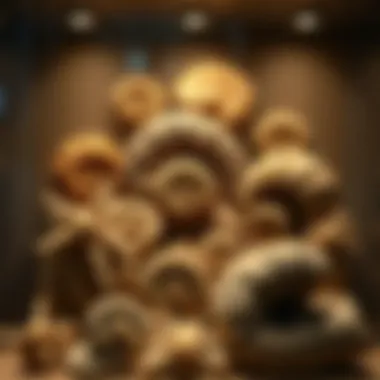
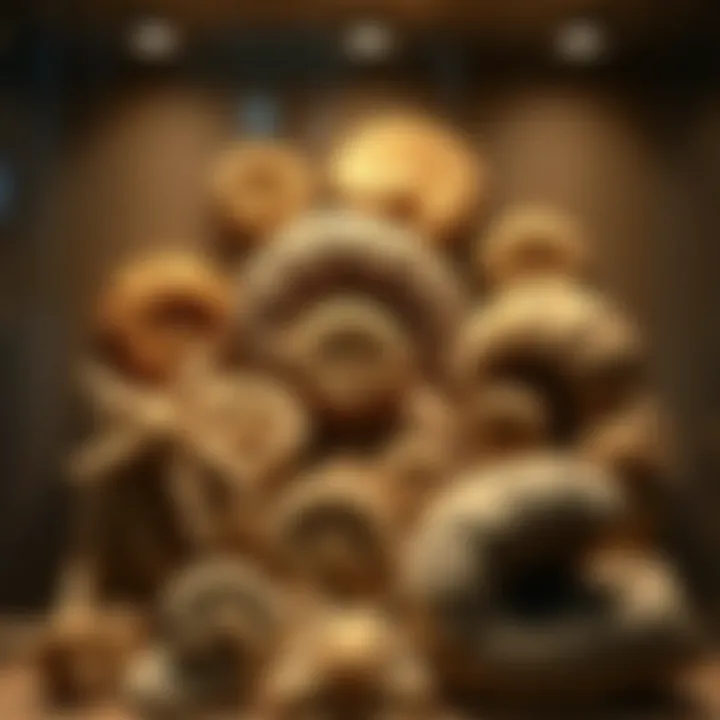
Factors Affecting Market Price
Several factors collar the fluctuating manner of market prices for Stigmaria fossils:
- Rarity and Availability: The more unique a fossil or limited in availability, the higher the demand. This directly influences the price in an upward trajectory.
- Research Developments: New findings in paleontology often elevate the perceived value of certain fossils. If a recent study highlights the significance of Stigmaria in prehistoric environments, the market may respond accordingly.
- Economic Conditions: Global market fluctuations affect buyers' willingness to pay. In tighter economic times, collectors might retract from bidding wars over prized pieces.
- Trend Cycles: Trends emerge based on collectors' preferences. Stigmaria fossils might see a resurgence in popularity as certain topics in geology or natural history gain traction, drawing collectors' eyes back to these fascinating specimens.
- Legislation and Regulations: Any change in laws regarding fossil trading also impacts the market. Stricter laws can limit availability and thus drive up prices, while more accessible regulations can spill more specimens into the market, potentially lowering prices.
"The price of fossils is often a reflection of our understanding of their story, molded by history and economy alike," one seasoned collector remarked, emphasizing the interplay of these factors.
By keeping an eye on these elements, collectors can make better-informed decisions on their purchases and sales within the Stigmaria fossil market.
Where to Purchase Stigmaria Fossils
Acquiring Stigmaria fossils can be both an exciting and intricate process. Knowing where to look is crucial for any collector, whether they are just starting out or are seasoned veterans in the field. This section delves into the various avenues available to procure these fascinating relics of the past, underscoring the significance of making informed choices when diving into the market.
Reputable Dealers
Finding a reliable dealer is often the first step on a collector's journey. Reputable fossil dealers provide authenticity and assurance, essential qualities when investing in Stigmaria fossils. You want someone who not only sells fossils but also respects the ethical implications of fossil collection and trade.
Characteristics of reputable dealers typically include:
- Established Presence: Look for dealers who’ve been in the business for a while. Longevity often signals reliability and expertise.
- Clear Provenance: Dealers should be able to provide a clear history of their specimens, showing that they are sourced ethically and legally.
- Customer Reviews: Checking testimonials or feedback on places like Facebook or Reddit can give insights into the dealer's reputation and quality of their products.
- Knowledgeable Staff: Good dealers will be able to answer your questions and provide information about the fossils they sell. This helps build a foundation of trust.
Some reliable dealers you might consider include The Fossil Store, Fossil Realm, and others recognized through groups on platforms geared toward collectors. Building a relationship with these dealers can facilitate future purchases and provide reliable leads on specific specimens.
Auction Houses and Online Platforms
The world of online sales has significantly broadened the options for acquiring Stigmaria fossils. Auction houses and specialized online platforms allow collectors to browse a global selection without geographical limitations. However, caution is needed here, as the authenticity of fossils can sometimes be a mixed bag.
Key platforms worth exploring include:
- eBay: While it’s a vast marketplace, ensuring to check seller credibility and reviews is essential. Star ratings and buyer feedback play a pivotal role in ensuring you're purchasing genuine items.
- Heritage Auctions: Known for its refined auction process, this platform connects buyers with high-quality specimens and includes expert evaluations.
- Fossil Auctions: Specifically dedicated to fossils, this site features many listings, from beginner pieces to rare finds. Buyers can often engage in bidding, which can lead to great deals.
- Social Media Groups: Facebook and Instagram host various groups and pages where fossil enthusiasts buy, sell, and trade. These spaces often have active members ready to share knowledge and transactions happen quite frequently.
Engaging with auction houses or online platforms requires due diligence. Always verify the seller and the legitimacy of the fossil, because the last thing you want is to pay a pretty penny for a piece that isn’t what it claims to be.
In summary, whether you're leaning towards a trustworthy dealer or browsing online platforms, having a cautious and informed approach is key to successfully adding Stigmaria fossils to your collection. As in any market, knowledge is power, and understanding where to purchase effectively enhances your collecting experience.
Caring for Your Stigmaria Fossils
Caring for Stigmaria fossils is more than just a chore; it's a crucial part of being a collector and custodian of these ancient treasures. Being attentive in this area not only preserves the fossils' physical integrity but also ensures their aesthetic and historical value remains intact. When it comes to fossils, it’s really a matter of giving them the TLC they deserve. After all, these relics carry stories of a distant past, and mishandling them can lead to irrevocable damage.
Proper Display Techniques
Displaying your Stigmaria fossils in a manner that showcases their intricate features and unique shapes is essential. Here are a few key points to consider when setting up a display:
- Lighting: Use indirect, low-level lighting to avoid fading and damage from direct sunlight. Too much bright light can alter the color of the fossils over time.
- Platform Choice: Invest in UV-filtering glass display cases. Not only do they provide protection from dust and physical harm, but they also create an elegant setting that highlights the fossil’s natural beauty.
- Avoid Stack-ups: It's tempting to show off multiple fossils together, but stacking too many can lead to unnecessary stress on them. Keep a respectful distance, giving each specimen room to ‘breathe’.
Remember to consider the climate of the room where you plan to display your fossils. A consistent temperature and humidity level can enhance their longevity. It’s always wise to keep them in a controlled environment, ideally around 65-70 degrees Fahrenheit and with low humidity levels.
Maintenance and Preservation
Regular maintenance is just as important as displaying them correctly. Here’s how to keep your Stigmaria fossils looking their best:
- Routine Cleaning: Use a soft brush or a lint-free cloth to gently wipe away any dust. Water should be avoided, as it can lead to erosion or mold growth.
- Check for Cracks: Periodically inspect your fossils for signs of cracking or deterioration. If you notice anything, it’s generally best to consult a professional for preservation advice rather than trying to fix it yourself.
- Storing: If you ever need to store them, wrap each specimen in acid-free tissue paper and place them in a sturdy container. Avoid using tape or materials with adhesives, since these can cause long-term damage.
"Regular care and maintenance not only enhance the beauty of your collection but also tell a story about your dedication to preserving history."
Engaging in these practices will not only protect your Stigmaria fossils but also enhance your appreciation of their historical significance. Each fossil collected is not just a piece of rock; it's a window into the Earth’s past.
Legal and Ethical Considerations
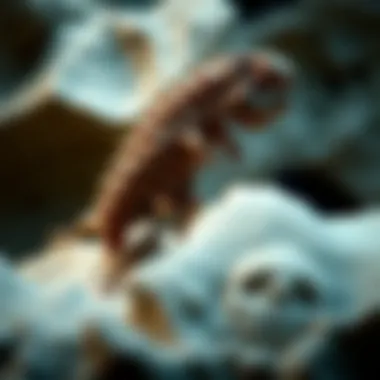

When it comes to collecting fossils like Stigmaria, understanding the legal and ethical considerations can make or break the experience. Fossils are not mere decorations; they are historical treasures that carry immense value both scientifically and culturally. Thus, it’s paramount for collectors to navigate their acquisition responsibly and knowledgeably. Failing to do so can lead to repercussions that tarnish both the collector's reputation and the integrity of paleontological science as a whole.
Regulations on Fossil Trade
The first step to becoming a responsible collector is familiarizing oneself with the regulations governing fossil trade. These laws can differ greatly depending on the location and the specific fossil in question. In many countries, fossils are considered public property if found on government land, which means they cannot be sold or collected without appropriate permits. This is particularly relevant in the United States, where the Federal Land Policy and Management Act outlines strict guidelines about fossil collection on federal lands.
Key regulations include:
- Permits Required: Always check if you need a permit to collect fossils, particularly in protected areas.
- Legal Ownership: Know whether fossils can be legally traded. Some jurisdictions strictly regulate the provenance of fossils to combat illegal trafficking.
- State-Specific Laws: Each state often has its own set of rules, which may be stricter than federal laws.
- International Regulations: Importing and exporting fossils like Stigmaria can come with hefty legal implications. The Convention on International Trade in Endangered Species (CITES) plays a role here, even if specific fossils aren't typically covered.
As such, knowing the laws can save you from financial loss or damaging your reputation in the fossil community. It’s always a smart idea to review local laws or consult legal experts in paleontology to ensure compliance.
Ethical Collecting Practices
The ethics of fossil collection extends beyond just legal requirements; it's about fostering a respectful relationship with ancient remains and the communities that value them. Ethical collecting means making choices that honor the history encapsulated in fossils while ensuring that they contribute positively to the scientific understanding of our past.
Practices to uphold include:
- Educating Yourself: Learn about the species and time periods your fossils come from. Each piece is part of a larger story, and understanding it highlights their significance.
- Supporting Research: Whenever possible, consider donating or lending fossils to universities or museums. This not only preserves them but helps the scientific community expand knowledge.
- Sourcing Responsibly: Purchase fossils only from reputable dealers. Always ask for documentation that shows where and how the fossil was obtained.
- Engaging with Local Communities: Respect the cultural significance of fossils and the areas they come from. Engage and support local communities that promote awareness and conservation of their natural heritage.
Ultimately, a fossil is not just an artifact; it's a bridge to our planet's history. By adhering to legal and ethical standards, you help ensure these bridges remain intact for future generations to explore.
Navigating the legal and ethical landscape of fossil collecting is not just a duty but also an opportunity to deepen your appreciation for these ancient relics. In a hobby often filled with discoveries, knowing you are contributing positively amplifies the experience tenfold.
Engaging with the Fossil Community
When it comes to collecting Stigmaria fossils, engaging with the broader fossil community is not just beneficial; it's essential. This diverse network can open doors to new opportunities, knowledge, and even friendships that can enrich your collecting experience. By immersing yourself in the fossil community, you gain access to a trove of information, resources, and mentorship that can greatly enhance your understanding and appreciation of Stigmaria and paleontology in general.
In the fossil world, collaboration often breeds innovation. Enthusiasts frequently share insights, trade specimens, or even collaborate on research projects. This collaborative spirit not only helps you refine your skills but also allows you to contribute to the ongoing dialogue surrounding fossil collection and preservation. Connecting with like-minded individuals can ignite passions and lead to lifelong learning, making each acquisition feel rewarding on multiple levels.
Forums and Online Communities
The digital age has opened a plethora of gateways into the fossil community, with forums and online platforms serving as vital tools for collectors. Websites like Reddit host various subreddits dedicated to paleontology and fossil collecting, fostering discussions that cover everything from identification tips to ethical collecting practices. Here, one can find both seasoned experts and enthusiastic newcomers, creating a melting pot of knowledge.
Online forums offer a unique platform to post photos of your Stigmaria fossils for crowd-sourced identification or appraisal. This interaction can be incredibly rewarding. You might be surprised by how some users have expert knowledge about specific fossils, helping you to better understand your collection. Moreover, it’s not uncommon to find members willing to sell or trade items, giving you a chance to expand your own inventory either for aesthetics or for study purposes.
"Sharing knowledge is like digging for fossils; you never know what hidden treasures you might uncover together."
Fossil Shows and Conferences
Attending fossil shows and conferences can be akin to stepping into a living museum, rich with opportunities to learn, trade, and network. These events gather collectors of all levels, offering a unique chance to meet fellow enthusiasts face-to-face. One great example is the Tuscaloosa Geological Society Fossil Show, which brings together fossil lovers in a vibrant environment.
At such events, you can:
- Discover rare Stigmaria specimens directly from reputable dealers,
- Attend lectures by noted paleontologists to deepen your understanding,
- Join workshops that can sharpen your fossil identification skills,
- Network with seasoned collectors who can provide insight about future trends in the fossil market.
These shows not only serve as marketplaces but also as educational hubs, marking a space where conversation flows as freely as ideas. Whether you leave with a new addition to your collection or just a head full of knowledge, attending these events is invaluable to your growth as a collector.
In all, engaging with the fossil community, whether through online forums or in-person events, serves to enhance your journey in the world of Stigmaria fossils. Learning from others, sharing experiences, and building connections can truly transform your collecting endeavors from a solitary pursuit into a vibrant adventure.
Epilogue
In wrapping up this exploration of Stigmaria fossils, it's evident that their fascination extends well beyond mere aesthetics. These fossils are a window into a world that existed millions of years ago, offering insights into ancient ecosystems and the evolution of life on our planet. The significance of collecting Stigmaria lies not just in possession, but in the ongoing academic and personal journey it facilitates for rock and fossil enthusiasts.
The Enduring Allure of Stigmaria
The enduring appeal of Stigmaria fossils can be attributed to several factors:
- Historical Importance: Stigmaria plays a vital role in paleobotany, serving as the root system of ancient plants. Collectors appreciate being able to own a piece of this history.
- Unique Aesthetic: The intricate patterns and forms of Stigmaria fossils add character and beauty to collections, allowing collectors to showcase their unique finds.
- Educational Value: Each fossil is a conversation starter. They provide a tangible connection to prehistoric life, sparking discussions about evolution, geology, and the earth’s ancient climates.
For a dedicated collector, these elements contribute to a richer experience. Engaging with Stigmaria not only enhances a collection but also deepens one’s understanding of natural history. This fascination ignites a passion that can inspire future generations of paleontologists and collectors alike.
"Owning a piece of Stigmaria connects us to the very roots of life itself, quite literally."
In essence, engaging with Stigmaria fossils offers a dual experience—where collecting meets storytelling, and each piece encapsulates a narrative of ancient landscapes. By appreciating and preserving these fossils, we not only honor our past but also contribute to the collective knowledge surrounding our planet's history.



